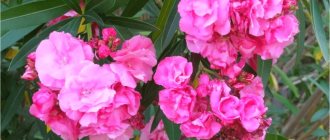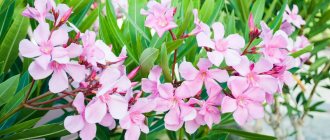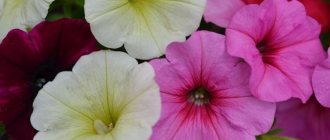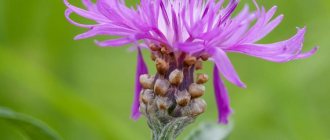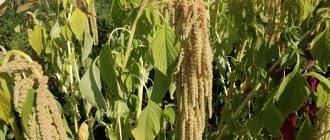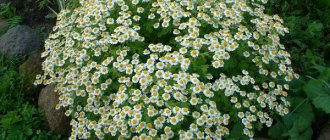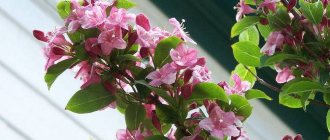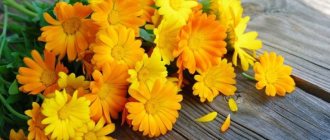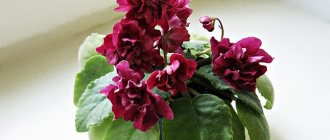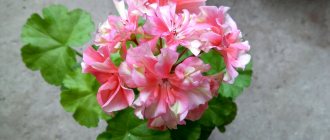Oleander indoor flower
Oleander nerium oleander is an evergreen perennial shrub with a magnificent appearance. He is a representative of the Kurtov family. The Latin name is “nerion”, translated as “wet”. In warm regions, oleander, due to its variety of shapes and colors, has become a popular ornamental plant for landscape design.
Oleander in nature
There are three main types of oleander. Common oleander is most often cultivated at home. A beautiful flower perfectly decorates your home interior. The tall plant can reach two meters in height, taking on a tree-like form. The growth of indoor oleander should be regulated by pruning.
Oleander is credited with mystical properties to cleanse the energy of the home, get rid of bad habits and promote career success. The fact that the plant cleans the indoor air from harmful impurities is a proven scientific fact.
No one knows for sure whether oleander is highly poisonous, dangerous or not. It is known that the poison is contained in the roots, flowers, and leaves. It is advisable to wash your hands thoroughly after caring for the bush and wear gloves when pruning. These measures are sufficient for protection.
Indoor oleander
Only by eating parts of the oleander plant can symptoms of real poisoning appear. Therefore, the plant is not suitable for rooms where children and pets live.
The leaves of the bush serve as raw materials for the manufacture of medicines for diseases of the cardiovascular system. Creams and ointments for skin diseases are produced from plant extracts.
Important! Due to its strong aroma, the flowering plant should not be kept in the bedroom. This can cause poor sleep and headaches.
pros
- Exceptional decorativeness
- Long flowering
- Pleasant aroma of flowers
- Relatively simple and easy to maintain
Minuses
A properly formed flowering oleander bush looks amazing. But you have to pay for everything. And having such exceptional beauty, oleander has 2 significant drawbacks:
- lack of winter hardiness, which makes it impossible to grow it in open ground almost throughout the entire territory of Russia,
- the toxicity of literally all parts of the oleander, the substance causes disturbances in the functioning of the gastrointestinal tract and heart.
Oleander comes from the subtropics, in Russia it is extremely winter-hardy, it hardly survives even mild southern winters, and can withstand at least minus 5-10 ° C. In case of prolonged frosts of -15 °C and freezing soil, the plant will die.
Therefore, oleander is grown in winter gardens and greenhouses, indoors, or as a tub crop, placed in the garden in the summer and brought indoors in the winter.
Precautions
- Do not grow oleander if you have children or pets.
- If oleander blooms in a small room, its smell can cause headaches.
- Flowering can cause allergies.
| IMPORTANT Oleander is a poisonous plant. Use gloves when working! |
Oleander contains potent toxins, so be careful when handling it. Wear gloves when transplanting and rooting. And if there are children and pets in the house, protect them from this plant.
If oleander juice gets on the mucous membrane, you should immediately wash yourself well or rinse your mouth with clean water.
Photo: blooming oleander on the Mediterranean coast
Features of practical care
Oleander is a very unpretentious indoor plant. Caring for the crop at home is not difficult.
But when purchasing a plant in a specialized store, you should select the location of the flower pot in advance (it is important to remember about the maximum possible growth of the stem). There are also a number of characteristic care features, including watering, fertilizing, and replanting the flower.
Origin and appearance
The entire zone of subtropical climate from Portugal to China is considered the homeland of the evergreen shrub. As an ornamental shrub, oleander is very popular in Mediterranean countries, Algeria and southeastern Asia. This sun-loving plant with a euphonious name and fragrant flowers is loved by many gardeners.
Perennial oleander is widespread on the Black Sea coast. In open ground under favorable subtropical climate conditions, it can grow as a tree up to 4 m in height. Sometimes the bushes form entire thickets that exude an amazing aroma.
Bloom
Oleander loves well-lit and ventilated areas. In the shade, the bush begins to hurt and even refuses to bloom.
The plant has beautiful flowers with five petals, painted in delicate white, orange, and pink colors. They are arranged singly or collected in inflorescences and are formed throughout the summer. They are famous for their pleasant strong aroma. The flowers are simple and double. The leaves are narrow, smooth, green or variegated with a distinct middle.
Varieties of oleander with photos and names
Varieties of decorative garden crops differ mainly in the color of the petals. Each variety has an attractive color. Pink shades are more common (from pale pink to deep crimson).
White
White terry oleander is a bush with lush inflorescences of a milky white color. The aroma is light and pleasant. The leaves are dark green, smoothly colored.
The Mont Blanc variety with snow-white corollas is distinguished by abundant and long-lasting flowering.
Yellow
Less common are varieties with yellow flowers. These are the varieties “Soleil Dor”, “Maria Gambetta”, “Flavestsene”.
Double lemon yellow oleander is a medium sized shrub. The flowers are bell-shaped.
Red
The common oleander has scarlet and crimson-red umbrella inflorescences.
Red flowers predominate in the varieties Algier, Etna, Alassio, Agnes Duras.
Other varieties of common oleander
Hybrid varieties have an unusual and bright coloring:
- Scarlet is a variegated variety, crimson petals are dotted with thin white stripes;
- Star of Persia is a variegated variety, the flower with a yellow center along the edges has a peach tint;
- Fragrant oleander is a low bush (up to 50cm), which is often grown in tubs and flowerpots; flowers are solitary, not collected in inflorescences;
- Indian oleander is a giant among shrubs, reaching four meters in height; flowers with a sweet aroma and bright colors (pink, red, yellow).
Planting oleander in a pot
To grow oleander, you need to take care of suitable soil and flower pots of a certain size.
Soil for oleander
The soil for the plant is prepared from turf soil, leaf soil, humus, peat, sand in a ratio of 2:1:1:1:1. You can also use slightly acidic garden soil or commercial flower soil. It is important to ensure good drainage.
The soil
Oleander is not very sensitive to fluctuations in the PH environment. Flower growers recommend using loamy soil. For replanting, a mixture of turf (2 parts), leaf soil (1 part), peat (1 part) and coarse river sand (1 part) is suitable. You can add some horn shavings.
Good garden soil with added sand is often used.
Pot size
The plant grows quickly, so the container for seedlings should be spacious, at least 6-7 liters. Every two years, the oleander is transplanted into a larger container. Based on the condition of the root system, you can determine whether the plant needs a new pot.
Planting in pots
The container volume for an adult plant reaches 40 liters.
Plant species
Common oleander, also known as fragrant oleander. This plant grows wild throughout almost the entire Mediterranean Sea. You can also find it in Algeria and Italy. In these countries, the plant also likes to live near rivers. This is one of the plants that has been grown for a very long time, dating back to the times of Ancient Greece. Since this plant is depicted in various images and frescoes.
The described crop is a fairly large evergreen bush that has a large number of erect branches. The plant reaches a length of about 4 meters, the leaves are located opposite each other or several at a time. The petioles are short, and the length of the leaves is 15 cm. The width of the leaf blade is approximately 2-3 cm. The leaves have a leathery surface and a bright, pronounced green tint. On the reverse side the leaf plate is somewhat lighter. When the flowering period arrives, the common oleander looks simply stunning. It blooms very profusely, with large, lush inflorescences, which, in addition to their pleasant coloring, have a very pronounced pleasant smell. The shade of the petals of this plant is predominantly pink or red. The corolla is simple, the leaves near the center are soldered. The flowering period lasts all summer and until mid-autumn. This plant is often cultivated, but the flowers here are much larger and have a double shape, as well as a variety of shades: white, pink, yellow and salmon. Sometimes there are multi-colored petals.
In addition to this species, other varieties of oleander are grown, which differ from each other.
Oleander care
Optimal conditions for growing oleander
Before purchasing an oleander for a home greenhouse, you should evaluate whether the room conditions are suitable for such a difficult plant.
- Bright room. Oleander is a resident of the subtropics, where the duration of a sunny day is at least 10 hours. It is better if the plants are installed near an eastern or south-eastern window. You need to take care of the winter illumination of the plant with special lamps.
- Large room volume, with mandatory ventilation. The strong aroma of oleander, although pleasant to the senses, can cause severe headaches. For the same reason, the flower is not placed in bedrooms, children's rooms or other rooms where people spend a lot of time. It would be optimal to place a pot of oleander in a spacious, bright hall, winter garden, or office.
- The room should be warm enough, without drafts. For oleander, the optimal temperature is considered to be no lower than +20 degrees. In a colder room, the plant stops blooming and may lose its leaves. For the winter, the plant enjoys a cool existence, with an air temperature of about +15 degrees.
In summer, it is useful to take a young oleander plant outside. Place it in the garden or on the balcony, in a sunny place. An adult plant is too large and not transportable.
Flower on the balcony
Watering and air humidity
On hot summer days, the oleander should be watered regularly and abundantly. The water that drains into the pan through the drainage holes does not need to be drained. Moreover, on such days there should be water in the pan at all times. The rest of the time, watering the oleander directly depends on the temperature in which it is kept. Usually after the top layer of soil has dried. In the cold season, watering the oleander is significantly reduced. Water approximately 3-4 days after the top layer of soil has dried. But be careful, oleander reacts very painfully to dry soil.
Spraying it in the summer is not necessary, but it won’t hurt either. But in winter, if you were unable to provide the oleander with a cold winter, be sure to spray it. Dry air causes the tips of the oleander leaves to dry out.
Bathing and spraying
If dust does not accumulate on the leaves, it is recommended to bathe the plant once a month. In winter, the air becomes dry, so you need to regularly spray the leaves with a spray bottle.
In summer, shrubs growing outside do not need to be sprayed.
Lighting
Definitely - as much as possible! Oleander is a very light-loving plant. At the same time, it is not even afraid of direct sunlight. Location near south-facing windows is the best solution. Oleander reacts very painfully to lack of lighting. The shoots stretch out, the leaves become faded, or even drop them altogether; there is no talk of flowering. In winter, oleander needs bright light no less than in summer. Artificial lighting is recommended.
Temperature
During flowering, oleander needs quite high temperatures. Not lower than +20 degrees. The optimal range is considered to be from +20 to +27 degrees. But it can be higher. The best place for oleander during this period, which falls in the summer, will be in the fresh air. In a well-lit place, but at the same time protected from heavy rainfall. It will feel great buried along with a pot near any artificial pond. But no matter where you keep it, the oleander requires, if not constant, then at least a regular flow of fresh air. This is one of the main rules for caring for oleander. In winter, give it a cool place to stay. During this period, the desired temperature is in the range from +8 to +15 degrees. While the plant is small, the desired temperature can be obtained on a windowsill or insulated loggia (balcony).
During the flowering period
During flowering, oleander needs a temperature of at least 20 °C. An outdoor location protected from the elements will be best. A pot with a plant can be buried near an artificial pond, where the flower will feel extremely comfortable.
Flowering period
If a flowering bush is in a room, you need to ventilate it more often. A strong aroma can affect the well-being of people living in the room. The flowering phase lasts up to five months.
What to do when the oleander has faded?
As they wither, the clusters with double flowers take on an unattractive appearance. In addition, fungi and mites grow faster in them. Dried inflorescences are cut off with garden shears, which are best treated with alcohol or vodka.
Varieties with simple flowers are easier to care for: wilted corollas fall off on their own.
There is no need to rush and cut off the peduncle; new buds may appear on it.
Vegetative shoots growing under flower buds should be removed - they slow down the growth and development of the flower.
Rest period
For the winter, the oleander can be moved indoors. If it is not possible to install the tub away from heat sources, you will have to organize additional humidification. You can place an aquarium or a container of water nearby.
Without good lighting (at least 10 hours a day), the plant may lose its leaves; flowering next year will be sparse.
Oleander pruning and crown formation
To ensure that the branches do not stretch and the flowering is abundant and long, it is important to form the crown correctly.
Sanitary pruning should be carried out annually in spring or autumn. A radical rejuvenation procedure is carried out every 3-4 years.
Spring pruning is carried out when buds have not yet appeared on the stems. The branches are shortened by half (and sometimes by 2/3), which stimulates the development of new shoots. Young shoots produce larger inflorescences.
When grown in the ground, overgrown bushes are pruned to the stump. This procedure is carried out in late autumn or early spring. All shoots are removed, leaving 15-18 cm stumps. Large cuts must be treated with garden putty.
This pruning method is not suitable for young plants, since their root system is not formed. Old and weak plants should be pruned with caution.
By properly shaping a young plant, you can get a slender flowering tree.
Care should be taken when working. You need to wear gloves and avoid getting the juice in your eyes.
Crown formation
In order for the oleander to grow as an attractive and flowering bush, it is important to correctly form its crown. First of all, do not forget to turn the flower in different directions towards the light, it will develop evenly. In addition, prune the oleander annually, otherwise the plant will produce few buds. To do this, after flowering, shorten the shoots of the flower by half or a third of the length. And also cut out damaged branches and those that grow deep into the plant.
Top dressing
Oleander spends a lot of energy on the formation of buds, so it needs regular feeding. From the beginning of spring to the end of summer, apply fertilizers 2-4 times a month, alternating organic and mineral formulations. Feed the flower on cloudy days or early in the morning, and only after watering. Otherwise, the compounds will burn the roots of the plant.
Features of care in winter and summer
In order for the plant to rest and gain strength for long, lush flowering, in winter it is advisable for the oleander to find a bright place with a temperature of +10-12 °C
- In summer, oleander feels comfortable at a temperature of 20–30 °C.
- In summer I take the oleander outside because it needs fresh air.
- In winter, I try to provide it with a cool hibernation - 8–15 °C.
- I water much less frequently during the dormant period.
For this, the oleander thanks me with generous and abundant flowering in the summer.
Photo: take the oleander out into the fresh air in summer
Transfer
With proper care, oleander grows quickly, so replanting is indispensable. For young plants, carry out this event every spring; replant adult specimens every 2-3 years. And also an emergency transplant is needed for those flowers whose roots have rotted or begun to protrude from the pot.
Carry out the procedure this way:
- Place a layer of broken bricks, pebbles or expanded clay at the bottom of the new container. Sprinkle the drainage with a centimeter of substrate. More details about soil for oleander are written in the section “Transplanting into soil”.
- Carefully remove the flower from the old pot. To make this easier, water the plant a few hours before the procedure.
- Trim any roots that are too protruding or damaged, and sprinkle the cut areas with crushed coal.
- Place the flower in a new pot, fill in the voids and lightly compact the soil. Make sure that the root collar is flush with the ground.
- Water the plant and return it to its normal place.
Provide proper care for the oleander and create comfortable conditions for it, and the plant will definitely thank you with rapid growth and numerous buds. To do this, follow the growing recommendations and carry out all necessary agrotechnical measures.
Features of growing at home. Briefly
A guest from hot, humid subtropics is sensitive to every nuance of care. Anyone who decides to plant an oleander at home will need not only extensive knowledge, but also a lot of patience to create optimal living conditions for the plant:
| Temperature | In winter - no lower than + 5°C, but you can’t put it near radiators, because the air there is too dry; in summer – + 18 – 27°C. |
| Air humidity | Above average, reacts poorly to heat and dry air if the room temperature is + 20 °C; During the heating season, they are sprayed daily, the rest of the time - not often, the flower pot is kept in a tray with wet expanded clay. |
| Lighting | Loves bright light, grows on the south side with shading at midday. |
| Watering | In summer - often, so that the soil is always moist; In winter, the soil should dry out between waterings - water once every 10 days with warm, settled water. |
| Priming | Peat, turf soil, sand, humus soil, taken in equal parts; 2) leaf soil, peat, turf soil, sand (2: 1: 1: 0.5); fertile soil with good drainage. |
| Feeding and fertilizer | Root feeding from May to September - 2 times every 30 days with liquid complex fertilizer, diluted twice. |
| Transfer | Once every 3 years, in the spring; young plants - more often (when the roots appear from the drainage hole of the pot); into a deep volumetric container. |
| Reproduction | In spring or late summer, apical cuttings are rooted in water; 2) freshly harvested seeds are sown. |
When caring for a shrub, you need to know that there are growing features. It is necessary to form a bush. In the second half of August or after flowering, the plant is cut by half, the side shoots by 10 cm. The flower loves fresh air. The room where it is located is often ventilated; in summer, the bush is taken out into the garden or onto the balcony (protected from drafts). The plant is poisonous; you need to wear gloves when working with it.
Reproduction
Oleander propagation occurs in several ways:
- By cuttings. It is recommended to carry out this procedure in spring. For cuttings, freshly cut shoots 12-15 cm long are used. The cut should be greased with powdered charcoal and the cutting should be planted in a mixture of charcoal and coarse sand. The cutting needs good lighting and temperature control, just like an adult plant. Excessive watering should be avoided to prevent the shoots from rotting. After two months, the cuttings with sprouted roots can be transplanted into a soil mixture with a composition suitable for oleander.
- Air layering. The branch is cut, a fragment of bark is removed and placed in water or wet sand. When the roots are formed, the shoot is cut off from the mother plant and planted in a standard soil mixture.
- Seeds. First, they are soaked in a solution of potassium permanganate, then in a solution of Zircon. The composition of the soil mixture where the seeds are sown is the same as for adult plants. But the air should be much warmer - 30-35 degrees Celsius. The substrate is placed in a container with a drainage hole, slightly moistened, and seeds are sown into it. They sprout in a week and a half. It is necessary to monitor the light regime and use artificial lighting. When young plants have several leaves, they can be planted in single pots.
Preparing for sowing
To begin, prepare a container or pot with drainage holes and fill the container with an all-purpose seedling mixture. If you want to create a substrate for plants yourself, then mix the following components in equal parts:
- peat;
- turf soil;
- perlite
In addition, it is important to pre-prepare the seed. To do this, soak the oleander seeds in potassium permanganate or a fungicide solution for 30 minutes. And then keep them in any growth stimulant, such as Zircon or Heteroauxin. This way you will significantly increase its germination rate.
After preparation, distribute the seeds evenly over the surface of the substrate and press them slightly into the soil. Spray the planting with warm water from a spray bottle and cover with plastic or glass. Place the greenhouse in a place with bright but diffused light, out of direct sunlight.
How to care for planting
In order for the seeds to germinate, it is important to maintain the temperature in the greenhouse within +25 °C. You should not allow it to rise to +35 °C, otherwise the plants will “burn.” And you also need to make sure that the temperature in the greenhouse does not drop below +22 °C, as this will lead to rotting of the seeds.
Otherwise, caring for crops consists of daily ventilation of the greenhouse, as well as periodic moistening of the soil. It is also important to provide the plants with enough light. Therefore, if the weather is cloudy outside, it is advisable to arrange additional illumination with a phytolamp.
Under such conditions, seeds will germinate in 30 to 90 days. When the seedlings emerge, begin to gradually accustom them to normal conditions. To do this, remove the cover first for 30 minutes, then for an hour, and so on. When the seedlings have two pairs of true leaves, plant them in individual pots.
Rooting in water
This method of propagating oleander should be used if the temperature in the room where you will root the cuttings does not rise above +30 degrees. In this case, place the workpieces in containers with water with the addition of a root formation stimulator. Make sure that the temperature of the solution fluctuates between +20...+27 degrees. And also add water to the container as it evaporates.
Keep the cuttings in an area with bright but indirect light, away from direct sunlight. Rooting the cuttings in water will take about 35-40 days, during which time they should grow roots 3 cm long. As soon as this happens, plant the seedlings in individual pots.
Dividing the bush
This method is used when transplanting overgrown shrubs. The plant is removed from the tub and the roots are carefully removed from the ground. If the root system is healthy and there are many growth points on the shoots, the bush is divided into 2-4 parts using a sharp knife. All wounds should be sprinkled with ash or activated carbon powder. After drying the rhizome in air, it is placed in a planting container of a suitable size.
Transfer
Oleander periodically needs to be replanted into a larger container after the root system has occupied the entire earthen ball. Late spring or early summer is best for replanting. Usually, if we are talking about a young plant, it is replanted every year. But adult crops need to be replanted more rarely - once every couple of years.
During replanting, it is necessary to shorten the old root shoots so that the total lump of earth becomes smaller and the plant blooms more luxuriantly. If the oleander has become too large and it is no longer possible to replant it, then you can simply replace the top layer of soil with a new one. When you cut off the old root system, it is necessary to treat the cuts with charcoal.
For the transplanted plant, you must first prepare the container by filling it with loamy soil with a neutral acidic reaction. You can also use a soil mixture consisting of the above necessary components. You can also add a few horn shavings. Do not forget about organizing a thick layer of drainage.
Diseases and pests
Oleander is hardy and well adaptable to almost any conditions. The pests that plague him include:
- scale insect;
- mealyworm;
- spider mite
To combat them, insecticides or traditional methods are used.
Shchitovka
When the first signs appear (sticky coating, deformation of leaves) or the parasites themselves, it is necessary to wash the foliage with warm water and laundry soap, then dry the bush in the open air.
Spider mite
If yellowish spots and thin cobwebs appear on the leaf blades, a mite has settled on the plant. Traditional methods of struggle are ineffective; it is better to use special drugs.
Mealybugs
A favorable environment for these pests is warmth and moisture. Oleander grows in such conditions, so it is better to prevent infection. It is necessary to remove dried flowers and stems in a timely manner and regularly inspect the flower.
What to do if the oleander does not bloom?
If the plant is not pruned by removing the tips of old shoots, it will not bloom, because flowers are formed only on young shoots .
Form the crown more often for lush flowering of the shrub.
Other reasons may be lack of moisture or nutrients. Water the plant in the required amount and do not forget to feed it with fertilizers, especially if the soil is infertile.
Why did the oleander leaves turn faded?
Most likely, the oleander does not have enough light. The shadow is extremely destructive for it; photosynthesis processes are disrupted. If it is not possible to replant, try to increase the access of sunlight to the shrub.
What to do if the oleander loses its leaves?
This is a signal that the plant is in a draft or does not have enough light. Increase the access of light to it and try to protect it from drafts. The amount of light must be increased gradually so as not to injure the flower.
Botanical description of oleander
The genus Nerium of the Apocynaceae family consists of one species. This is Nerium oleander - common oleander. A beautiful flowering shrub native to southern Spain and Morocco came to Central Europe about 500 years ago and became one of the favorite flowers of the aristocracy. Throughout the Mediterranean region, China, India, oleander grows outdoors, as do hibiscus and camellia. In temperate climates, this is a greenhouse and indoor plant.
Features of the plant:
- An evergreen, erect and spreading shrub, less often a small tree, 1–6 m high.
- The leaves are narrow, leathery, up to 20 cm long, up to 4 cm wide, with a dark green surface and gray-green underside, located in nodes of 2 or whorls of 3–4 pieces.
- Inflorescences in the form of a bouquet or umbrella are formed at the ends of the shoots.
- The corollas are large, 3–7 cm in diameter, with a strong aroma; in wild forms they consist of 5 pink or white petals.
- Color of flowers of cultivated forms: pink, apricot, red, salmon, yellow, creamy white.
- The fruits are dry pods with “crested” seeds, like those of a dandelion.
Oleander grows on average 20–30 cm per year, although the growth may be less, depending on the variety. Flowering lasts from late June to late autumn. Pink laurel does not lose its Mediterranean charm in the living room, but feels better in a spacious living room, in the hall and winter garden, and on the terrace in summer.
Demanding flower: what do you need to know?
For successful cultivation, these features should be taken into account.
- It blooms from June to October.
- He needs a lot of sunlight.
- A drop in temperature to +17 will be perceived as stress in the summer and spring. In winter, indoor oleanders can withstand temperatures down to +8 without shelter, and garden oleanders up to -10, but with proper preparation.
- Watering should be frequent and plentiful. The plant loves abundant watering, as well as humidity, and therefore in areas it is often planted next to ponds.
- There are no special requirements for air humidity, but it has been noted that oleander reacts negatively to a decrease in air humidity. In nature, it is often found on river banks.
- Fertilizers should be applied 2-4 times a month in spring and summer. Mineral fertilizers are used for flowering plants.
- It is an evergreen plant, but with negative changes in the environment it can lose its leaves. In this case, they stop watering the flower, if possible, transfer it to a balcony or loggia to maintain a natural reaction to seasonal environmental changes, and wait for the end of the growing season dormancy period.
- The period of vegetative rest lasts from November to February. In order to avoid the risk of its spontaneous onset and death of the flower, it is necessary to observe the timing of germination of seedlings from seeds or cuttings (it is carried out in spring or autumn).
- Pruning and shaping are carried out immediately after flowering is completed. The bush of this perennial grows quickly. In the first year it looks elegant thanks to the splendor of the foliage and the appearance of the ovary and flowering. If pruning and shaping are not carried out, it can grow up to 2 meters very quickly. Formation is carried out using protective gardening gloves. If juice gets into your eyes or mucous membranes, rinse them with plenty of water. After the procedures, it is advisable to wash your hands with soap. It is recommended to regularly prune the bush, however, this must be done while protecting your eyes and hands.
- The plant is replanted in the spring.
- The following soil mixture is most suitable for cultivation: peat, sand, chernozem, with an acidity of 5.5 to 7.8.
- Propagated by seeds and cuttings, layering, shoots, grafting.
- The plant should be protected from pests such as mealybugs, scale insects, spider mites, aphids, thrips, and oleander cancer.
Neutral soil is more suitable for growing oleander
Important! Considering such nuances, there is no need to fear that the flower will wither suddenly. It will take root in the garden or will decorate a window sill, balcony, or room for many years in a row.
Optimal crop watering
Oleander loves moisture very much, because a sufficient amount of liquid is necessary for growth and flowering. This feature is partly explained by the presence of large leaves, from the surface of which a large amount of liquid evaporates.
How to water a flower:
- Watering is carried out only with settled water at room temperature. In this case, it is better to give preference not to frequent watering, but to more rare, but abundant watering.
- With this approach, moisture completely saturates all layers of the soil. Increase the frequency of watering in spring and summer, and also use additional spraying of foliage from a spray bottle.
This measure will not only moisturize the plant, but also maintain the proper level of humidity in the room.
Varieties and varietal characteristics
There are different decorative forms of indoor oleander flower:
- Terry - with several petals.
- Ordinary - with one row of petals.
The former are more decorative and attract the attention of amateur gardeners.
Pink oleander with double peduncles is a low bush, not exceeding 1 meter in height. It has narrow long leaves, similar to willow leaves, only arranged differently.
The white variety of oleander can have single or semi-double flowers, large in diameter, which spread aroma all summer long. Grows up to 2 meters.
Red oleander with smaller flowers than the previous two species.
Yellow oleander with regular peduncles, similar in appearance to bells. The seeds resemble chestnuts, but several flowers can grow from one seed.
How to propagate oleander
Before moving on to considering propagation methods, you should know that oleander is a poisonous plant; all manipulations with the flower must be carried out with rubber gloves. It is also strongly recommended to keep the culture away from children and pets.
Oleander can be propagated in two ways:
- cuttings;
- seeds.
Each of these methods of oleander propagation has its own advantages and disadvantages, which are worth learning about in more detail.
Growing and care
Pink laurel is an unpretentious plant that even a novice gardener can grow. When choosing room decor, it is important to know in advance whether oleander is poisonous. If there are cats in the house, then you need to take into account their passion for tasting plants. Saving the animal in this case will be quite difficult.
In order for an oleander to grow and develop well, it really needs lighting. If the pot is located at the back of the room, then artificial light will do. South-east windows are best suited for placement. For lush and abundant flowering, it is recommended to take the pot out onto the loggia in the summer. At the same time, do not forget to protect the plant from precipitation and direct sunlight. Daylight must last at least eight hours, otherwise the buds will not form.
Does the plant contain poison or not and what are its dangerous properties?
There is an opinion that it is very poisonous. Moreover, you can be poisoned by all its parts, including the root. This is due to the high content of glycosides, oleandrin and ineriin. When these substances enter the human or animal body, severe intoxication develops, which is difficult to neutralize.
The plant is dangerous even in dry form. Honey from bees that collect pollen from the oleander is also considered poisonous. Also, cases of death have been recorded after drinking tea from oleander flowers.
Even inhaling the aroma may cause headaches and nausea.
